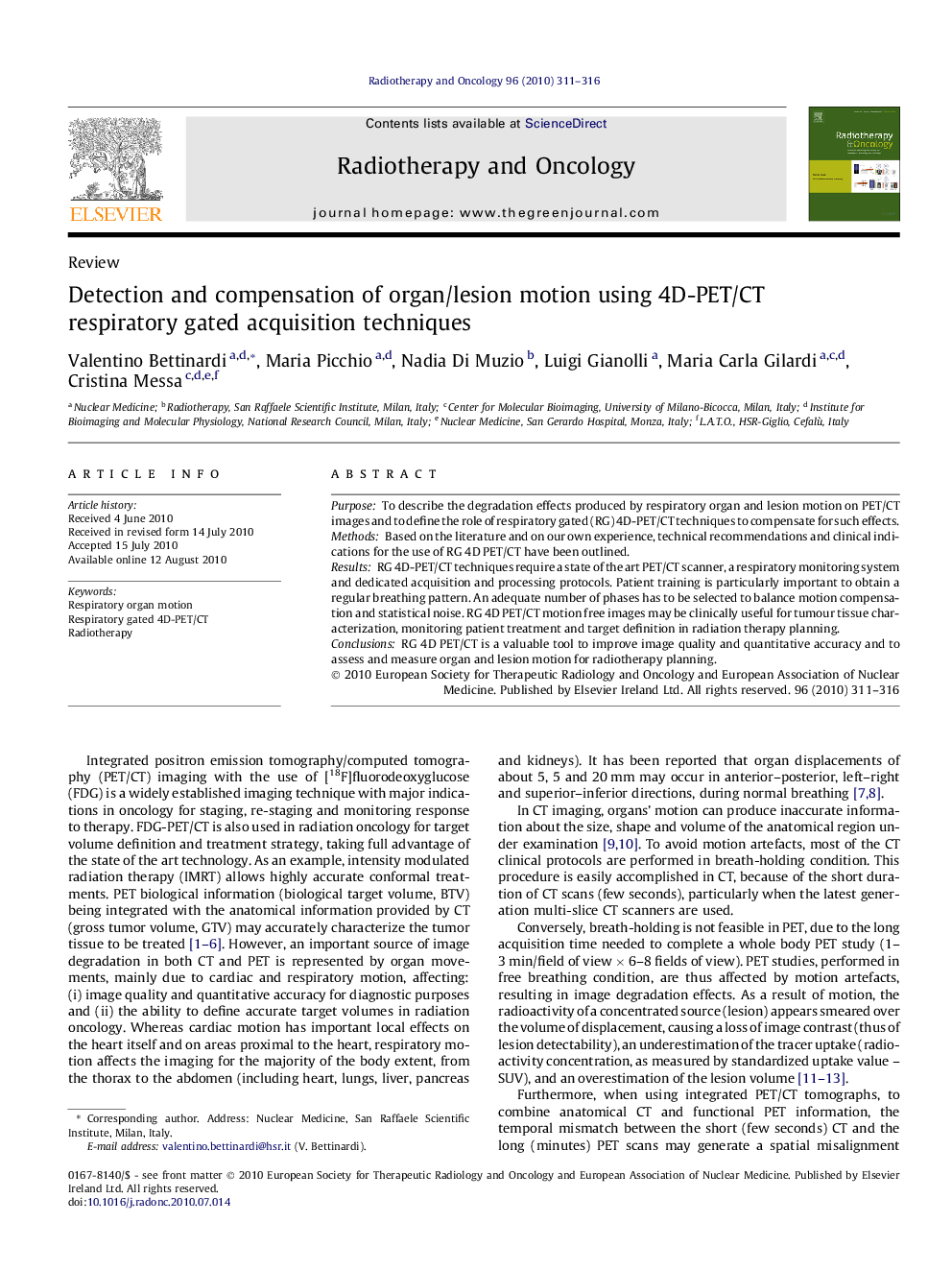| Article ID | Journal | Published Year | Pages | File Type |
|---|---|---|---|---|
| 2159381 | Radiotherapy and Oncology | 2010 | 6 Pages |
PurposeTo describe the degradation effects produced by respiratory organ and lesion motion on PET/CT images and to define the role of respiratory gated (RG) 4D-PET/CT techniques to compensate for such effects.MethodsBased on the literature and on our own experience, technical recommendations and clinical indications for the use of RG 4D PET/CT have been outlined.ResultsRG 4D-PET/CT techniques require a state of the art PET/CT scanner, a respiratory monitoring system and dedicated acquisition and processing protocols. Patient training is particularly important to obtain a regular breathing pattern. An adequate number of phases has to be selected to balance motion compensation and statistical noise. RG 4D PET/CT motion free images may be clinically useful for tumour tissue characterization, monitoring patient treatment and target definition in radiation therapy planning.ConclusionsRG 4D PET/CT is a valuable tool to improve image quality and quantitative accuracy and to assess and measure organ and lesion motion for radiotherapy planning.
